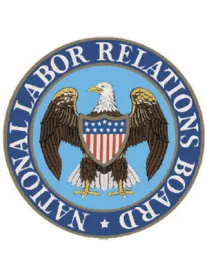An NLRB case involving the construction industry provides insight into how the agency’s new joint employer standard may be applied.
The Board’s decision in Browning-Ferris Industries of California, Inc., 362 NLRB No. 186 (Aug. 27, 2015), provided that “the initial inquiry [under the Board’s new joint employer standard] is whether there is a common-law employment relationship with the employees in question.” The inquiry then turns to “whether the putative joint employer possesses sufficient control over employee’s essential terms and conditions of employment to permit meaningful collective bargaining.” For details, see Labor Board Sets New Standard for Determining Joint Employer Status.
In Green JobWorks LLC/ACECO, LLC, Case No. 05-RC-154596 (Oct. 21, 2015), a National Labor Relations Board regional director has declined to find a subcontractor and temporary staffing agency to be joint employers. Temporary staffing agency Green JobWorks (“GJW”) provided demolition and asbestos abatement laborers to a demolition, environmental remediation and renovation services company, ACECO, LLC. The Construction and Master Laborers’ Local Union 11 sought to represent a unit of laborers the union claimed was “jointly” employed by GJW and ACECO. However, the regional director found the parties’ Master Labor Service Agreement (“MLSA”) and the level of influence and control that ACECO exerted over GJW employees did not establish that GJW and ACECO, in fact, were joint employers.
The regional director relied heavily on the MLSA to find that GJW and ACECO were separate business entities with different management, that independently set and paid wages, maintained payroll records, withheld payroll taxes and provided workers’ compensation for their own employees. The MLSA also stated that hiring, discipline and discipline authority were solely within GJW’s exclusive discretion and control. For example, GJW recruited, hired and assigned its employees to ACECO sites, with negligible or no input by ACECO. Likewise, when GJW employees were removed from specific sites or when employment decisions were made by someone other than GJW, these decisions typically were made or directed by a general contractor or by a hygienist, not ACECO. Moreover, although the MLSA reserved the right for ACECO to remove GJW employees from job sites for safety reasons or any other reasonable objections, the regional director found this was not an unqualified right of refusal, unlike the right of refusal found to be evidence of joint employer status in Browning-Ferris Industries.
The regional director also found ACECO’s influence regarding wages was limited to the hourly rates negotiated between ACECO and GJW for certain projects, which he did not consider a strong indicator of joint employer status. Moreover, ACECO did not prohibit GJW from paying its employees more for comparable work and GJW employees could negotiate higher wages based on job record and related factors.
Finally, the regional director found ACECO exerted little to no control over “bargainable issues” such as break times, safety, speed of work and productivity.
Accordingly, the regional director directed an election for a unit comprised solely of workers employed by GJW at ACECO sites.
The union has the right to appeal the regional director’s decision, which is not considered binding in other cases.






 />i
/>i

